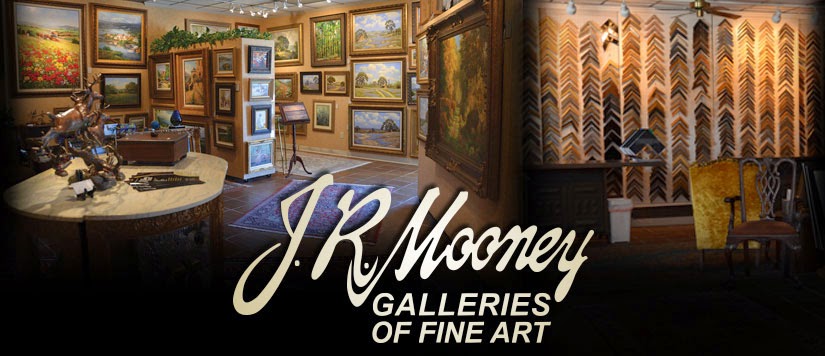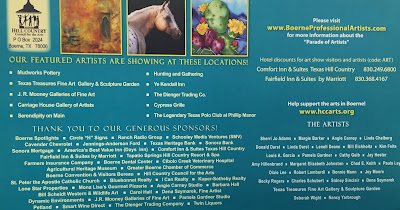Stay tuned for more information about Jay Hester's solo exhibition of new work very soon!!!!!
Jay Hester
24" x 18"
$4,500.00
Call 830-816-5106 to purchase or view before the "Parade"
Although
small in stature, Hays was known for never backing down during a
fight. He learned that the determination of a few could whip a larger
force. He was an inspiration to those who followed him and became a
true hero on the Texas frontier. Hays is credited for turning back
several Comanches during a fight at Enchanted Rock, near Fredericksburg,
as well as forcing Mexican General Woll out of San Antonio in 1842.
The addition of the Colt revolver additionally led to defeating
attacking Indians at several locations in the Hill Country and beyond.
This gun allowed a Ranger to reload and fight from horseback.
Eventually, the California gold rush lured Hays to the area as he
speculated in mining. He became the first elected sheriff of San
Francisco and helped found the city of Oakland. He is, however, best
known for his defense of the Texas frontier when Comanches dubbed him
"Devil Yack. He died in 1883 on San Jacinto Day.
Jack Hays was born at Little Cedar Lick, Wilson County, Tennessee. His father Harmon A. Hays fought in the War of 1812, naming his son for a relative by marriage, Colonel John Coffee.
In 1836, at the age of 19, Jack Hays migrated to the Republic of Texas. Sam Houston appointed him as a member of a company of Texas Rangers because he knew the Hays family from his Tennessee years. Jack met with Houston and delivered a letter of recommendation from then-President Andrew Jackson.
In the following years, Hays led the Rangers on a campaign against the Comanche in Texas, and succeeded in weakening their power. Jack rode with an Apache Chief named Flacco who led the charge into every battle with him. The duo led and inspired the Rangers. In 1840 Tonkawa Chief Placido and 13 scouts joined with the Rangers to track down a large Comanche war party, culminating at the Battle of Plum Creek.
Later, Hays commanded the force against the invasion from Mexico of 1842. During the Mexican–American War (1846–1848), Hays commanded the First Regiment of Texas Rangers at the Battle of Monterrey, established six companies along the northern and western frontier of Texas, and commanded the Second Regiment of Texas Rangers in Winfield Scott's Mexico City campaign.The Rangers excelled during this conflict, gaining nationwide fame.
On April 29, 1847, in the Magnolia Hotel, Hays married Susan Calvert, a descendant of George Calvert, First Baron Baltimore, in Seguin, Texas, where he had his home.His wife was also a descendant of the Benjamin Harrisons of Virginia and related to George and Martha Washington.
The Comanche had great admiration for Hays. Upon the birth of Hays' first son in California, Chief Buffalo Hump sent the Hays family a gift, a golden spoon engraved "Buffalo Hump Jr."
When son John Caperton Hays married Anna McMullin in San Francisco, two Texas Ranger legacies were combined. Her father, Captain John McMullin, was one of Jack Hays' closest friends; he had followed him to California.
Jack Hays' brother was Confederate Brigadier General Harry T. Hays of New Orleans. Their sister Sarah "Sallie" Hays Hammond was the mother of John Hays Hammond. John Hays Hammond, Jr., was an apprentice to Thomas Edison and worked with Nikola Tesla; he was on the board of directors for RCA.
In 1849 Hays was appointed by the United States government as the US Indian agent for the Gila River country in New Mexico and Arizona.
The next year the Hays joined the migration to California, leading a party of a party of Forty Niners from New York that traveled in wagons to California from Texas. This party pioneered a shortcut on Cooke's Wagon Road that saved a long journey to the south. That improved route became known as the Tucson Cutoff. Hays was elected sheriff of San Francisco County in 1850, and later became active in politics. In 1853, he was appointed US surveyor-general for California.
Hays was one of the earliest residents of the city of Oakland. In the following years, he amassed a considerable fortune through real estate and ranching enterprises. In 1860, while in Virginia City, Nevada, on business, he heard the news of the First Battle of Pyramid Lake. He commanded a force of volunteer soldiers at the Second Battle of Pyramid Lake.
During the Civil War, Hays retired from military involvement.
In 1876, Hays was elected as a delegate to the Democratic Party national convention, which nominated Samuel J. Tilden for the presidency of the United States.
Jack Hays died in California on April 21, 1883, and his remains were interred at Mountain View Cemetery in Oakland.
John C. Hays is the namesake of Hays County, Texas.
Source: https://en.wikipedia.org/wiki/John_Coffee_Hays
"Jack Hays"
Jay Hester
24" x 18"
$4,500.00
Call 830-816-5106 to purchase or view before the "Parade"
























